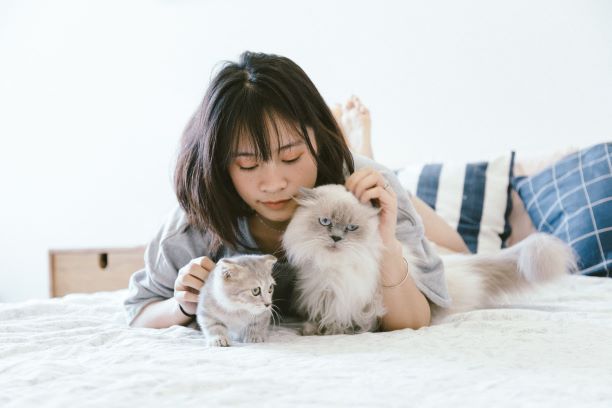How to care for pregnant cats
Cat overpopulation is a real problem, which is why it is advised to have your pet cats neutered as early as possible. However, if you delayed spaying your cat, and they’ve been socializing with male cats, there’s a fairly good chance that your female cat can get pregnant.
Cats don’t immediately show visible signs of pregnancy until the later part of their term. However, there are subtle signs you can look out for that hint at cat pregnancy. A sudden change in the colour of her nipples and increased appetite are common signs that your cat may be expecting. Depending on her personality, she may also be more affectionate or withdrawn than usual, and start to put on weight.
If you’re suspecting cat pregnancy, it’s always best to visit the vets for confirmation and advice on how you can care for her during and after her term. There are also fairly easy ways that can help you ensure a healthy pregnancy and delivery for your cat.
During the pregnancy
You can expect to notice behavioural changes on your cat during her pregnancy. It is normal to see increased appetite as she’s not just trying to nourish herself, but also her younglings. During this time, it’s in your best interest to provide kitten or other growth-supporting food.
While we’re placing our focus on keeping the expectant cat healthy, it’s important that you do not give her vaccinations until she delivers her younglings. You can, however, be more selective in what you feed your cat and choose those that contain taurine.
As she’s nearing her delivery, you’ll notice more behavioural changes in your cat. Much like humans, pregnant cats’ mammary glands become bigger and they exhibit nesting behaviour in preparation of the delivery.
Set up a “queening box” in a warm place in your home which should be large and soft enough for her to lay her kittens. Choose a box with raised sides and a removable lid. It should be warm enough and private enough for her to stay in during and after delivery.
There are cases when the queen cat doesn’t agree with your choice of a queening box for her to deliver her babies in. She may pick a different spot and set her base there. This is perfectly normal for nesting cats.
During labour
When your cat is in labour, it’s important that you do not interrupt her by petting. Cats do not need touch when in labour. In fact, touching or petting your cat may cause them to shut down, therefore interrupting the whole process.
While it may be a little concerning that your cat isn’t drinking or eating during labour and is having contractions. You have to let her go about it in her own terms as much as possible. Call a veterinarian if you need more guidance in the process or if you have reason to believe that your cat needs medical attention (e.g. active contractions but visible difficulty during delivery or more than 2 hours of rest in between deliveries).

After delivery
After the kittens have been delivered, you can expect the mama cat to spend most of her time with her kittens. At this stage, she will focus on feeding and cleaning them, which is why it’s important for you to give her as much nourishment as she needs.
Maintain the cleanliness of the queening box as much as you can, and do so without disturbing the babies. Allow the kittens to socialize as much as possible within 10 weeks after they are born. They should be nourished with milk and kitten food until they are 6 to 8 weeks when they can finally be given cat food.
Visit your local vets in Auckland to know more about how you can take care of your pregnant cat. You can also visit us at https://www.vetforpet.co.nz/shop/Cats/x_cat/00323.html for more cat food, accessories, and clothing.



Comments